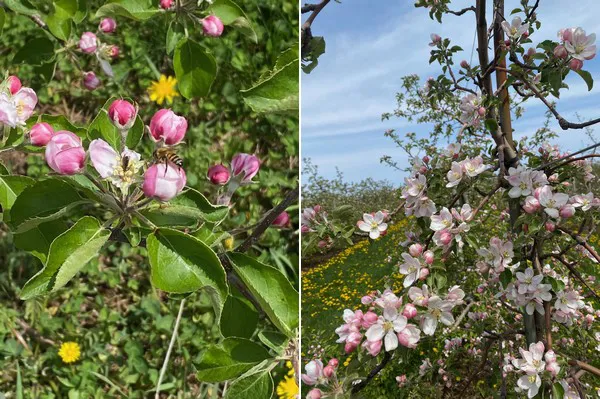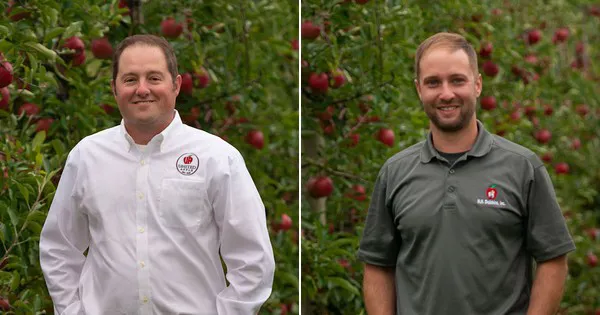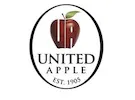The northwestern region of New York State is known for rich fertile soil, consistent sources of natural precipitation and overall moderate temperatures. Last winter, the weather in the region proved to be overall mild, which was followed by a cool spring.
“Winters in western NY can vary significantly season to season but this year we had a moderate winter with more rain than the large volume of snow that impacted other parts of the state,” says Brett Baker, president of United Apple Sales with orchards and packing facilities located in Lyndonville, New York. “We welcome year-round steady precipitation as it provides the sustainable groundwater for orchards to maximize growing conditions from the bloom in mid-May all the way through harvest beginning in late August.”
 A look at the spring bloom.
A look at the spring bloom.
Justin Whipple, United Apple’s field operations and orchard manager said March was cool and rainy. This led to mid-April when there was a stretch of temperatures in the 70s, which moved trees from green tip to cluster and basically pushed about a month’s worth of growth in a week.
“While early warm weather can be positive, we don’t want the trees waking up too early as there still is the potential for significant shifts in the temperature.
The critical temperatures that can negatively affect a potential crop become a concern at the tight cluster, which is usually the middle to end of April. From then on, temperature plays a crucial role in crop volume, fruit size, fruit finish and storability,” says Whipple. “This year we had favorable weather during the growth stage of the tight cluster through the beginning stages of bloom. We are approaching full bloom and the extended forecast looks great for pollination. All indicators are favorable for a very strong crop.”
 L-R: Brett Baker, Justin Whipple
L-R: Brett Baker, Justin Whipple
United Apple offers a line of regional and club varieties for retailers and processing/slicing customers. Regional varieties include Acey Mac, Fuji, Gala, Honeycrisp, Pink Lady and Red Delicious.
Baker noted that last season it saw a huge crop of Honeycrisp with favorable sizing, excellent color and great flavor. “Typically, Honeys are in a bi-annual cycle where volume is normal one year and then rebounds the subsequent season with more fruit. Based on a review of the Honeycrisp blocks, we anticipate even stronger volume.”
Based on interest in Pink Lady and its cold storage strength, United Apple has increased this varietal’s acreage. “Pinks have great flavor for eating out of hand and hold their color,” says Baker.
Club varieties – EverCrisp, Ruby Frost and SnapDragon - are also benefiting from mild spring weather. “Over the past six to seven seasons, we have gained extensive experience in growing these varieties and developed specific handling practices and longer-term storage strategies,” says Baker.
 For more information:
For more information:
Bob Solberg
United Apple
Tel: +1 612-916-0187
+1 (585) 765-2460 (sales)
bsolberg@comcast.net
https://unitedapplesales.com/
